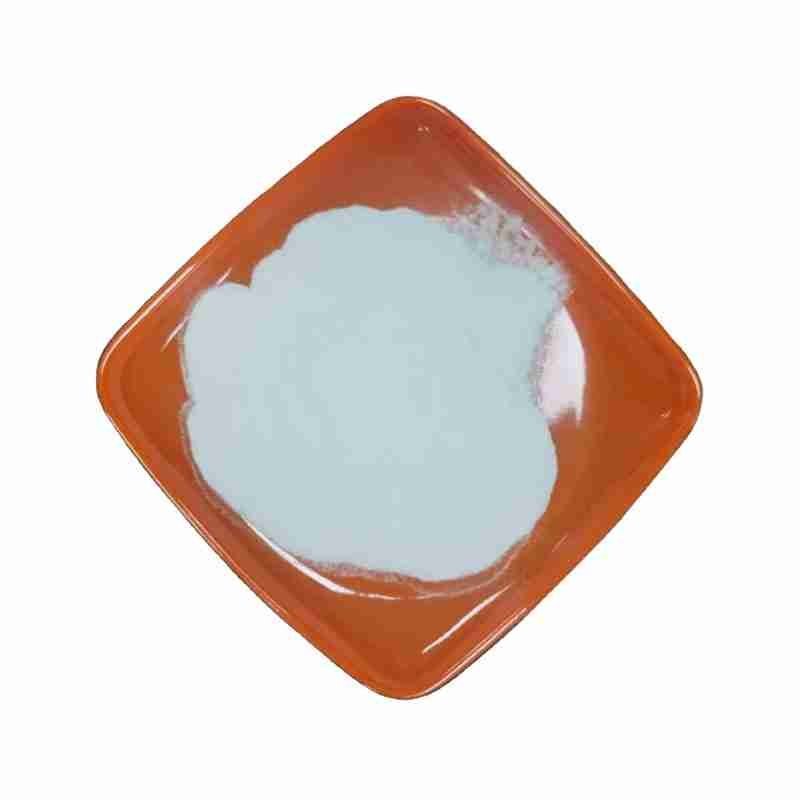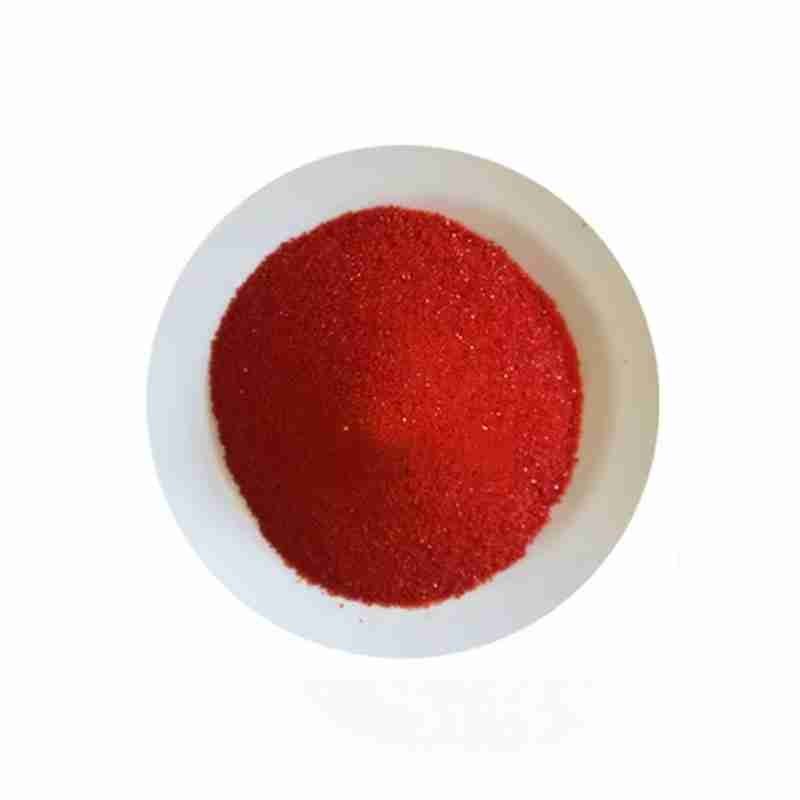Rutile CAS# 1317-80-2
Rutile is one of the major minerals containing titanium. It is tetragonal and often has intact tetra-columnar or needle crystalline-like structure. Its aggregate exhibits granular or compacting blocky shape. It appears as dark, red, maroon, yellow or orange color with iron-rich product appearing as black color; it streaks appears as yellow to light brown color. It has adamantine gloss. Iron rutile exhibits semi-metallic gloss. It is brittle with the hardness being 6 to 6.5 and the density being 4.2~4.3 g/cm3. Products being rich in iron, niobium and tantalum have the density being increased with the high value being up to 5.5 g/cm3 or more. It can be dissolved in hot phosphoric acid. After cooling and dilution, adding sodium peroxide can turn the solution to brown color (titanium reaction). Rutile can be produced in gneiss, pegmatite, eclogite (flash) rock and placer.
发送询盘
Rutile CAS# 1317-80-2
| Rutile Basic information |
| General description?Chemical Properties?Uses?Production method |
| Product Name: | Rutile |
| Synonyms: | r830(mineral);rutile(tio2);sagenite;TiO2(Rutile);tr-700;Titanium(IV) oxide, rutile powder 99.5%;TataniuM oxide;Titania nanotubes |
| CAS: | 1317-80-2 |
| MF: | O2Ti |
| MW: | 79.87 |
| EINECS: | 215-282-2 |
| Product Categories: | nano structured metal oxide;Inorganics;1317-80-2;REALET |
| Mol File: | 1317-80-2.mol |
 |
|
| Rutile Chemical Properties |
| Melting point | 1843 ??C |
| Boiling point | 2900 ??C |
| density | 4.17 g/mL at 25 ??C(lit.) |
| Fp | 2500-3000??C |
| storage temp. | Amber Vial, Refrigerator |
| solubility | Chloroform (Slightly, Sonicated), Hexanes (Slightly, Heated, Sonicated), Methane |
| form | powder |
| color | White |
| Specific Gravity | 4.2 |
| PH | <1 |
| Water Solubility | Soluble in hot concentrated sulfuric acid, in hydrofluoric acid and alkali. Insoluble in water. |
| Merck | 14,9472 |
| Dielectric constant | 6.6??Ambient?? |
| Stability: | Light Sensitive |
| InChIKey | SOQBVABWOPYFQZ-UHFFFAOYSA-N |
| CAS DataBase Reference | 1317-80-2(CAS DataBase Reference) |
| EPA Substance Registry System | Rutile (TiO2) (1317-80-2) |
- 2
- 2-diallylpent-4-en-1-amine
- 4
- 95-16-9
- Ammonium sulfamate
- Benzothiazole
- cas:67889-00-3ح2
- cas:83524-75-8 | pigment black 32
- cas:928836-00-4 | 2
- cas:932745-70-5 | 4
- Chemical Minerals
- Coconut diethanolamide
- Daily Chemicals
- discount
- for sale
- General pvc resin
- hexyl D-glucoside
- in stock
- Lauramidopropyl betaine
- LAURIC ACID MONOETHANOLAMIDE
- Petroleum Additives
- Plasticiser
- Ploymers
- price
- PVC
- quotation
- Raw Materal
- Remove term: Petroleum Additives Petroleum Additive
- SODIUM ETHYL 2-SULFOLAURATE
Related Products
Chemical Name: Zinc citrate
Synonyms: Zinc citrate trihydrate
CAS No.: 546-46-3
Molecular Formula: C6H8O7Zn
Molecular Weight: 257.5
Appearance: White powder
Hexaammonium molybdate is a high-purity, water-soluble molybdenum compound with the chemical formula (NH4)6Mo7O24??4H2O. It is a crystalline solid that serves as a molybdenum source in various applications, including agriculture as a micronutrient fertilizer and in the industrial production of catalysts and pigments. Known for its stability and reactivity, it is used to enhance the properties of steel and other alloys, promoting their hardness and resistance to wear.
Chemical Name: Choline salicylate
CAS No.: 2016-36-6
Molecular Formula: C12H19NO4
Molecular Weight: 241.28
Appearance: Red-Brown Crystal
Chemical Name: Dehydrocholic acid
Synonyms: Acide dehydrocholique; Triketocholanic acid
CAS No.: 81-23-2
Molecular Formula: C24H34O5
Molecular Weight: 402.53
Appearance: Powder
Bentonite, sodium-activated, is a type of clay rich in montmorillonite minerals, which undergoes a process to increase its sodium content. This alteration enhances its swelling and adsorptive properties, making it a highly effective thickener and gel-forming agent. Sodium bentonite is widely used in drilling muds, foundry sands, and as a binder in various industrial applications. Its ability to absorb liquids and form stable gels makes it invaluable in cosmetics, agriculture, and as a component in the manufacturing of ceramics and paper products.
Chemical Name: Ammonium Iron(II) Sulfate
Synonyms: Diammonium iron bis(sulphate); iron (ii) ammonium sulfate
CAS No.: 10045-89-3
Molecular Formula: FeH5NO4S
Molecular Weight: 170.95
Chemical Name: 1,1,2,2-Tetrachloroethane
Other Name: Tetrachlorethane
CAS No.: 79-34-5
Molecular Formula: C2H2Cl4
Molecular Weight: 167.85
Appearance: Liquid
Chemical Name: 3-Hydroxybutyric acid
CAS No.: 625-71-8
Molecular Formula: C4H8O3
Molecular Weight: 104.1
Appearance: White powder
Carbon black, also known as carbon dark, is a kind of unformed carbon. It??s a light, loose and extremely fine black greasepaint with a veritably large face area ranging from 10 to 3000m2/g. It??s an deficient combustion of carbonaceous substances( coal, natural gas, heavy oil painting, energy oil painting,etc.) under conditions of inadequate air. Or products deduced from thermal corruption. Those made from natural gas are called?? gas dark??, those made from oil painting are called?? beacon black??, and those made from acetylene are called?? acetylene black??. In addition, there are?? trough black?? and?? furnace black??.
Chemical Name: UV-120
Other Name: (2’,4’-Di-tert-butylphenyl 3,5-di-tert-butyl-4-hydroxybenzoate)
CAS No.: 4221-80-1
Molecular Fomula: C29H42O3
Molecular weight: 438.66
Assay: ≥99%(LC)
Ammonium sulfamate is a white crystalline compound with the chemical formula (NH4)2SO3. It is a versatile chemical used in various applications, including as a flame retardant, a fertilizer ingredient, and a chemical intermediate. In the agricultural sector, it serves as a source of nitrogen, promoting plant growth. As a flame retardant, it is effective in reducing the flammability of materials. Additionally, it is used in the synthesis of other chemicals due to its reactivity with amines and other organic compounds. Its properties make it a valuable component in a range of industrial processes.
Silicon dioxide, commonly known as silica, is a naturally occurring compound found in quartz and sand. It is a primary component of most rocks and is widely used in various industries due to its high thermal stability, chemical inertness, and optical clarity. In chemical applications, it is valued for its abrasive, refractory, and adsorptive properties, making it essential in products like glass, ceramics, and electronics.


















